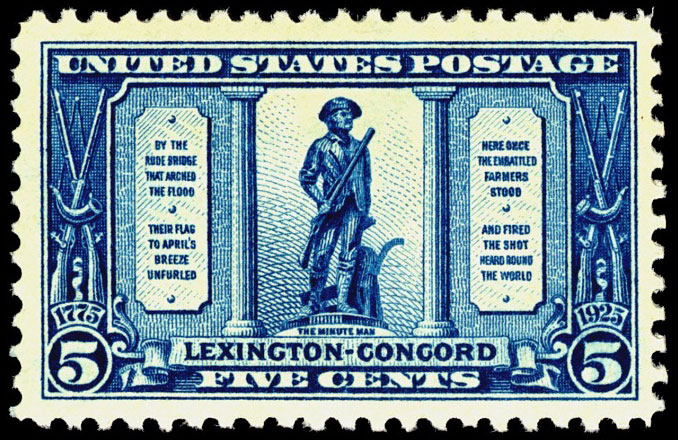
A series of three stamps issued on April 4, 1925, commemorated the 150th anniversary of the battles of Lexington and Concord, the first conflicts of the American Revolutionary War. These battles immortalized the Minutemen, the voluntary militia that confronted the British during those battles and inspired Ralph Waldo Emerson's poem 'Concord Hymn'. The poem includes the phrase "the shot heard round the world."
The 2-cent and 5-cent stamps were directly related to both Lexington and Concord. The 2-cent stamp pictured the actual battle at Lexington, and the 5-cent stamp featured the "Minute Man" statue at Concord. The 1-cent stamp depicts General Washington assuming command of the American troops at Cambridge a full two months after the skirmishes.
These stamps were the first of a group of commemoratives celebrating the 150th anniversaries of important events of the War of Independence. While the skirmishes at Lexington and Concord were clearly worthy of postal commemoration, some Revolutionary War commemoratives were brought about by political pressure and depict events that would be considered relatively minor today.
